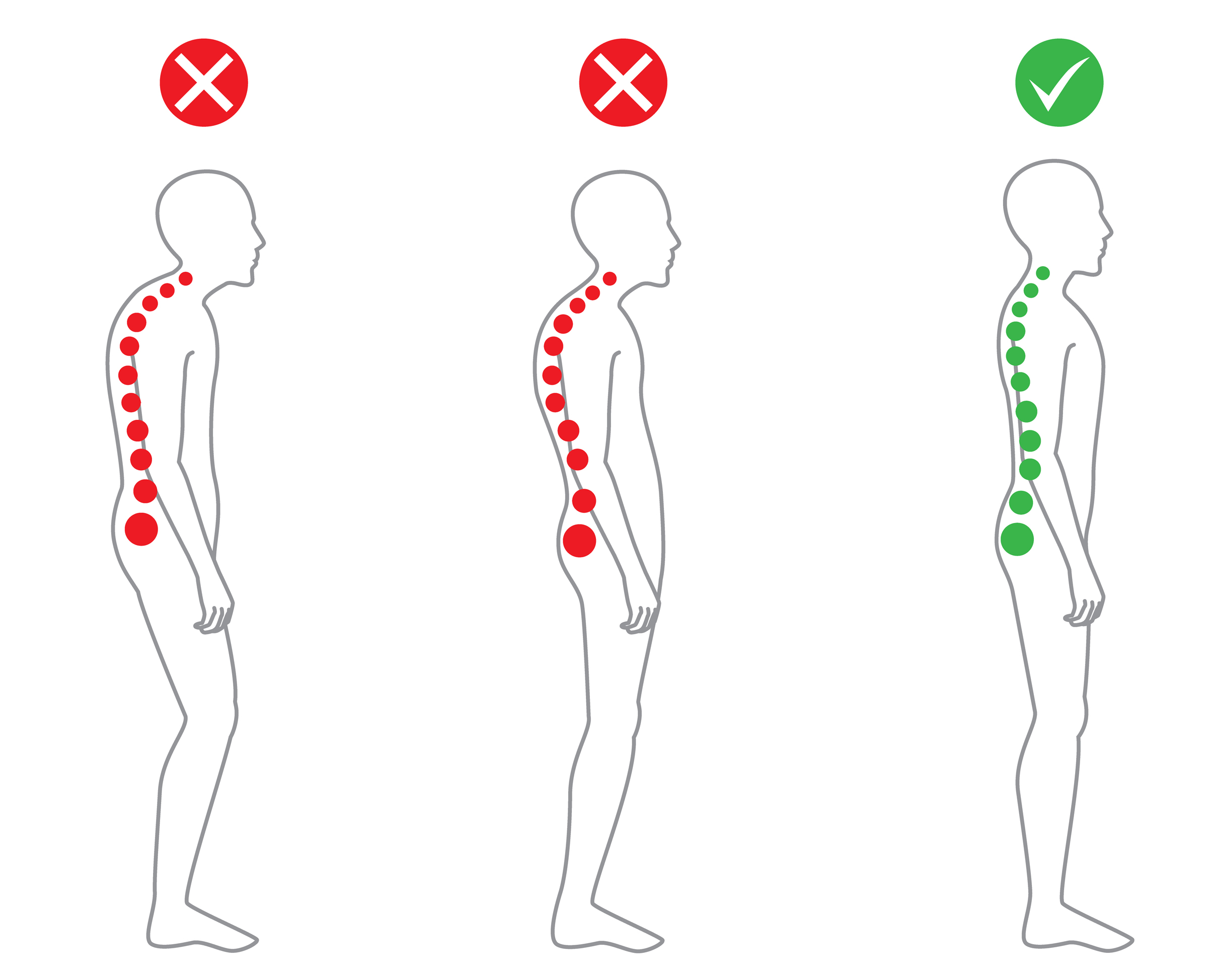 Back pain affects eight out of ten people at some time in their lives. In fact over 33 million Americans are currently experiencing back pain. There are simple things that people can change to prevent recurring back pain and one of those is correcting poor posture.
Back pain affects eight out of ten people at some time in their lives. In fact over 33 million Americans are currently experiencing back pain. There are simple things that people can change to prevent recurring back pain and one of those is correcting poor posture.
Poor posture can lead to chronic neck and back pain due to the excessive pull on the spine joints and muscles. As people slouch and their heads move forward it increases the weight on spinal structures. For every inch your head moves forward over your spine, it adds 10 pounds of weight. Good posture and back support are critical to reducing the incidence and severity of back and neck pain.
Check the status of your posture by looking into a mirror and answering these questions:
- Is my head centered over my feet?
- Are my shoulders level?
- Are my arms evenly spaced from your body?
- Do my thumbs face forward?
- Can I draw a straight line from the center of my feet up to my nose?
If you’ve answered no to any of these questions, then the first step in correcting your posture is to examine it throughout the day to identify what needs improvement. Next, work on changing daily habits to correct those areas. You can gradually improve your back support and help decrease back pain. It will take some mindfulness and perseverance, but over time the new posture will seem natural and more comfortable.
Here are some guidelines for how to achieve good posture:
Sitting Posture: 
- Be sure your back is aligned against the back of the chair. Avoid slouching or leaning forward, especially when tired from sitting for long periods.
- When sitting at a desk, your arms should be flexed at a 75 to 90 degree angle at the elbows.
- Your knees should be even with your hips, or slightly higher.
- Keep both of your feet flat on the floor.
Driving Posture:
- Sit with your back firmly against the seat.
- Your seat should be a proper distance from the pedals and steering wheel to avoid leaning forward or reaching.
- Your headrest should support the middle of your head to keep it upright. Tilt the headrest forward if possible to make sure that the head-to-headrest distance is not more than four inches.
Posture for Lifting and Carrying:
- Always bend at your knees, not your waist.
- Use the large leg and stomach muscles for lifting, not your lower back.
- When carrying a heavy or large object, keep it close to your chest.
- When carrying a backpack or purse, keep it as light as possible and balance the weight on both sides as much as possible, or alternate from side to side.
Standing and Walking Posture: 
- Stand with your weight mostly on the balls of the feet, not on your heels.
- Keep your feet about shoulder width apart and avoid locking your knees.
- Stand straight and tall with shoulders upright—not slouched or hunched forward—and let your arms hang naturally down the sides of your body.
- Be sure your head is square on top of your spine, not pushed out forward.
- If standing for a long period of time, shift your weight from one foot to the other or rock from heels to toes.
- When walking, keep your head up and eyes looking straight ahead.
David J. BenEliyahu, DC, DAAPM, DABCSP is the Administrative Director of the Back & Neck Pain Center at Mather Hospital.
Attend a free seminar on the prevention and treatment of back and neck pain.

